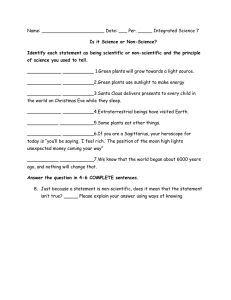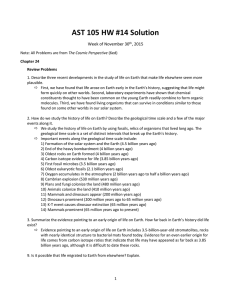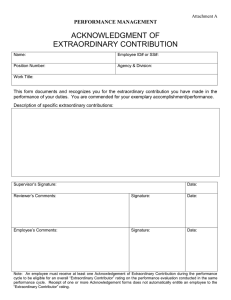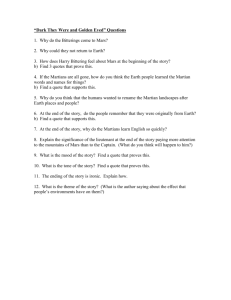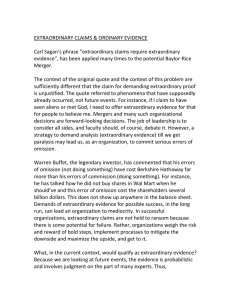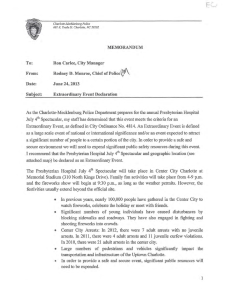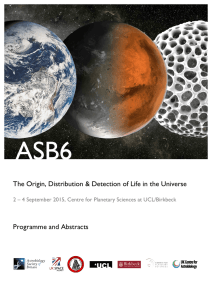AST 105 HW #14 Week of November 30 , 2015
advertisement
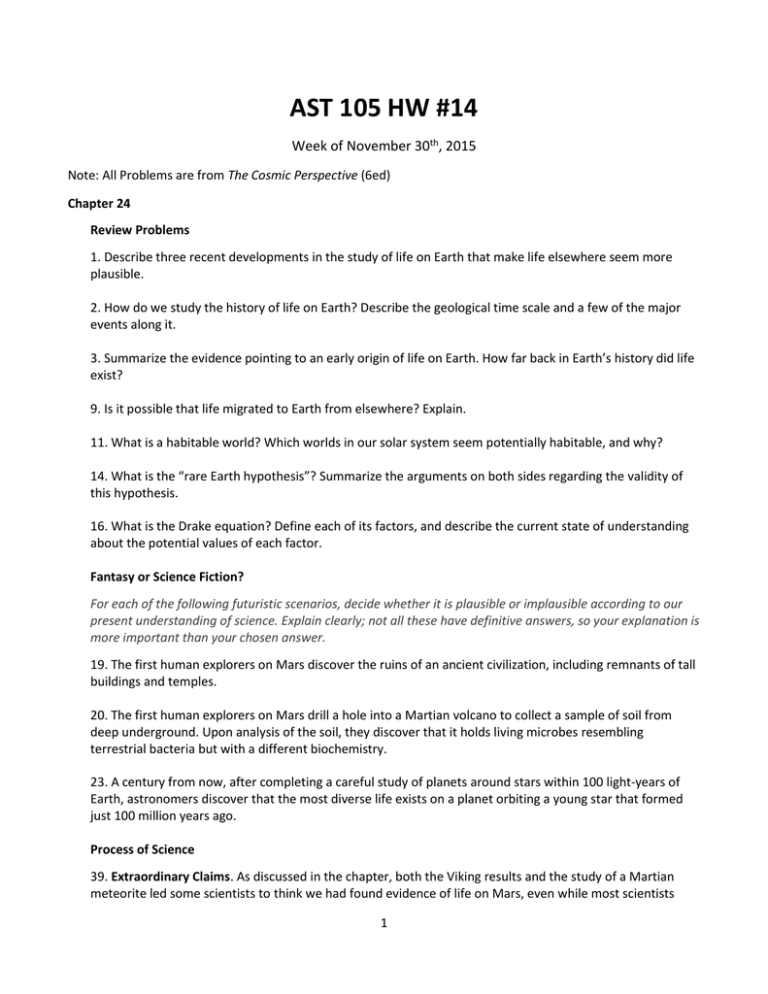
AST 105 HW #14 Week of November 30th, 2015 Note: All Problems are from The Cosmic Perspective (6ed) Chapter 24 Review Problems 1. Describe three recent developments in the study of life on Earth that make life elsewhere seem more plausible. 2. How do we study the history of life on Earth? Describe the geological time scale and a few of the major events along it. 3. Summarize the evidence pointing to an early origin of life on Earth. How far back in Earth’s history did life exist? 9. Is it possible that life migrated to Earth from elsewhere? Explain. 11. What is a habitable world? Which worlds in our solar system seem potentially habitable, and why? 14. What is the “rare Earth hypothesis”? Summarize the arguments on both sides regarding the validity of this hypothesis. 16. What is the Drake equation? Define each of its factors, and describe the current state of understanding about the potential values of each factor. Fantasy or Science Fiction? For each of the following futuristic scenarios, decide whether it is plausible or implausible according to our present understanding of science. Explain clearly; not all these have definitive answers, so your explanation is more important than your chosen answer. 19. The first human explorers on Mars discover the ruins of an ancient civilization, including remnants of tall buildings and temples. 20. The first human explorers on Mars drill a hole into a Martian volcano to collect a sample of soil from deep underground. Upon analysis of the soil, they discover that it holds living microbes resembling terrestrial bacteria but with a different biochemistry. 23. A century from now, after completing a careful study of planets around stars within 100 light-years of Earth, astronomers discover that the most diverse life exists on a planet orbiting a young star that formed just 100 million years ago. Process of Science 39. Extraordinary Claims. As discussed in the chapter, both the Viking results and the study of a Martian meteorite led some scientists to think we had found evidence of life on Mars, even while most scientists 1 disagreed. Those who disagree often point to Carl Sagan’s dictum that “extraordinary claims require extraordinary evidence.” Briefly discuss one of these cases, and decide whether you think it should require extraordinary evidence before being accepted. What follow-up evidence might lead scientists to re-evaluate their positions? 2

